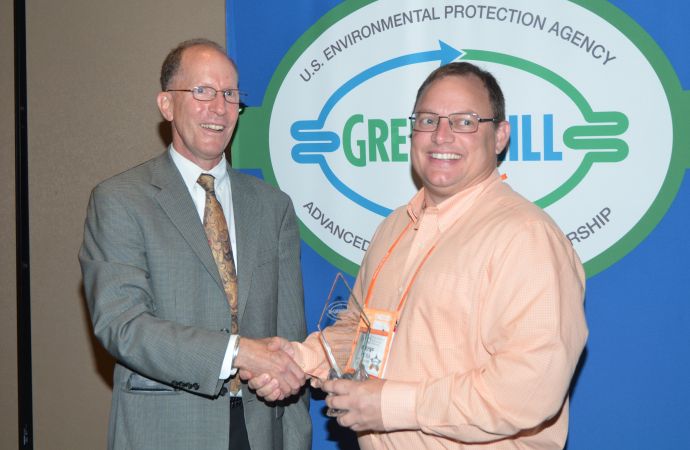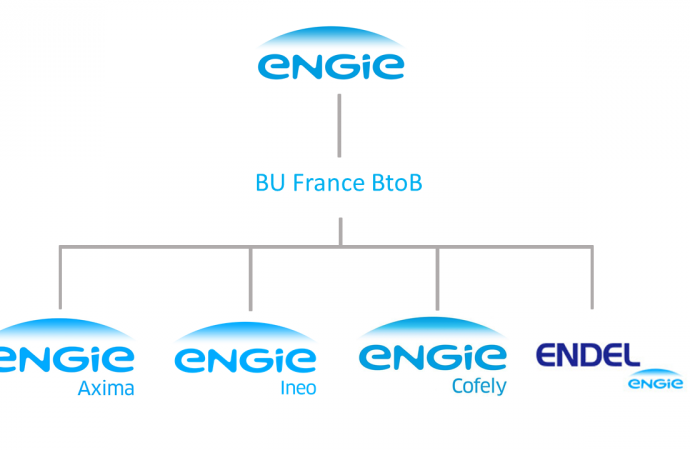Bahrain, Kuwait and the United Arab Emirates are experiencing an economic boom and a continued population growth. Ammonia is a preferred option in new, high-capacity processing and distribution centres to provide fresh foodstuff to the region, as recent case studies show.

Refrigeration systems using ammonia have traditionally been used in the manufacturing and storage of foodstuff in the Middle East. The current rapid economic growth and a corresponding population rise, has made the region’s food & beverage industry face the challenge of supplying an ever-increasing number of people in need of fresh food. Several case studies, published in the latest newsletter of ECSLA (European Cold Storage and Logistics Association), now demonstrate that ammonia continues to be a preferred choice of leading food producers and retailers in the Middle East. New high-capacity production plants and distribution centres hence use the natural refrigerant as the most energy-efficient and climate-friendly alternative available.
Ammonia systems in operation
Among the systems installed in the Middle East feature the following:
Kraft Foods, Bahrain: The international food and beverage company has built a new production plant for cheese products and powdered drinks in Bahrain, from where it will supply food retailers throughout the Middle East. At the heart of the installed refrigeration system lies a machine room with ammonia refrigeration units chilling cold water to 2°C. The coolant is distributed to the various users via a network of pipes, absorbing the heat generated by manufacturing processes. The refrigeration system for the 60,000 m2 production plant was put into operation in late 2007.
Iran Dubai Co., Bushehr: The fruit and vegetable wholesaler enlarged its existing warehouse at Bushehr and converted it into a cold store. The 33 ammonia evaporators used for high-pressure operation could not exceed 4.5 metres in length due to size restrictions on the walls. The compact yet high-performance solution provides cooling to the 3,700 m2 warehouse consisting of several cold storage chambers with different temperatures each, covering a range from -25°C to 15°C. Any parts of the system that are iced up are defrosted using hot ammonia gas.
Del Monte, Dubai: The fruit producer and beverages company has built a new fresh fruit, juice and salad production facility in Dubai. Covering an area of 30,000 m2, it consists of several air-conditioned production lines, a cold store and a cooling chamber, where 4,500 tonnes of fruit and vegetables ripen each year. The facility’s refrigeration is provided by an indirect ammonia system charged with 4,000 kg of ammonia. The heated gas is condensed at 40°C by an evaporative condenser. Water is used as the coolant for the high-temperature reactor, and glycol for the low-temperature zone. The circuit supplies water chilled to 6°C for the higher-temperature cold stores, corridors and for the air-conditioning system. The low-temperature level supplies glycol chilled to -10°C to the processing rooms and cold store.
Panda, Riyadh: The Saudi Arabian food retailer uses a gravity-driven ammonia system in its state-of-the-art distribution centre in Riyadh that was put into operation in 2008. The system is connected to two refrigerant circuits – one providing water chilled to 13°C for cooling the regular storage rooms, while the other provides glycol chilled to -10°C for the chill stores, cold stores and freezers. The heat from the evaporated ammonia is transferred to a second glycol circuit used to defrost the freezers.
Ammonia systems in operation
Among the systems installed in the Middle East feature the following:
Kraft Foods, Bahrain: The international food and beverage company has built a new production plant for cheese products and powdered drinks in Bahrain, from where it will supply food retailers throughout the Middle East. At the heart of the installed refrigeration system lies a machine room with ammonia refrigeration units chilling cold water to 2°C. The coolant is distributed to the various users via a network of pipes, absorbing the heat generated by manufacturing processes. The refrigeration system for the 60,000 m2 production plant was put into operation in late 2007.
Iran Dubai Co., Bushehr: The fruit and vegetable wholesaler enlarged its existing warehouse at Bushehr and converted it into a cold store. The 33 ammonia evaporators used for high-pressure operation could not exceed 4.5 metres in length due to size restrictions on the walls. The compact yet high-performance solution provides cooling to the 3,700 m2 warehouse consisting of several cold storage chambers with different temperatures each, covering a range from -25°C to 15°C. Any parts of the system that are iced up are defrosted using hot ammonia gas.
Del Monte, Dubai: The fruit producer and beverages company has built a new fresh fruit, juice and salad production facility in Dubai. Covering an area of 30,000 m2, it consists of several air-conditioned production lines, a cold store and a cooling chamber, where 4,500 tonnes of fruit and vegetables ripen each year. The facility’s refrigeration is provided by an indirect ammonia system charged with 4,000 kg of ammonia. The heated gas is condensed at 40°C by an evaporative condenser. Water is used as the coolant for the high-temperature reactor, and glycol for the low-temperature zone. The circuit supplies water chilled to 6°C for the higher-temperature cold stores, corridors and for the air-conditioning system. The low-temperature level supplies glycol chilled to -10°C to the processing rooms and cold store.
Panda, Riyadh: The Saudi Arabian food retailer uses a gravity-driven ammonia system in its state-of-the-art distribution centre in Riyadh that was put into operation in 2008. The system is connected to two refrigerant circuits – one providing water chilled to 13°C for cooling the regular storage rooms, while the other provides glycol chilled to -10°C for the chill stores, cold stores and freezers. The heat from the evaporated ammonia is transferred to a second glycol circuit used to defrost the freezers.
MORE INFORMATION
Related stories





